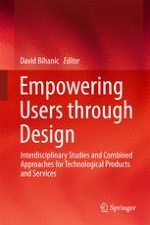2015 | OriginalPaper | Buchkapitel
2. Who Designs?
Technological Mediation in Participatory Design
verfasst von : Theodora Vardouli
Erschienen in: Empowering Users through Design
Aktivieren Sie unsere intelligente Suche, um passende Fachinhalte oder Patente zu finden.
Wählen Sie Textabschnitte aus um mit Künstlicher Intelligenz passenden Patente zu finden. powered by
Markieren Sie Textabschnitte, um KI-gestützt weitere passende Inhalte zu finden. powered by
